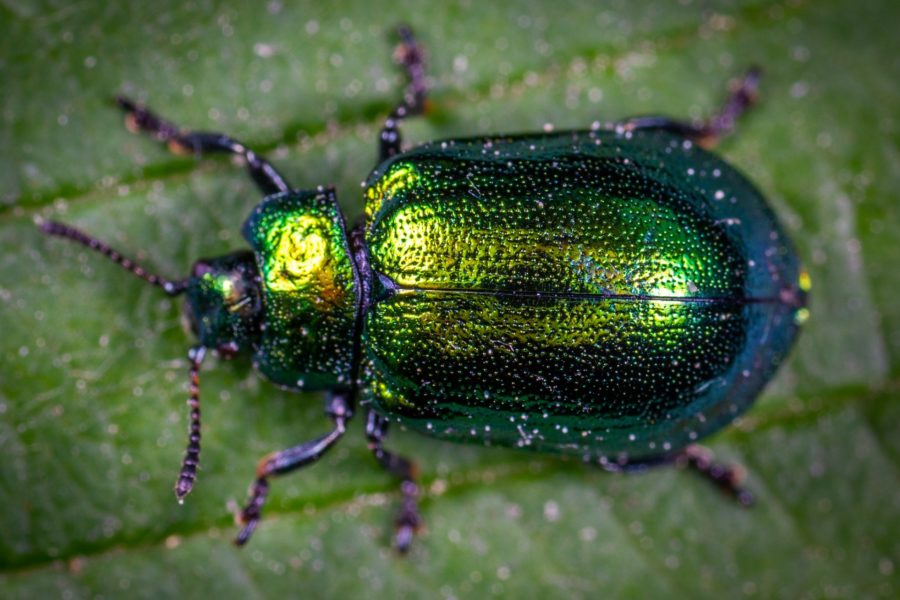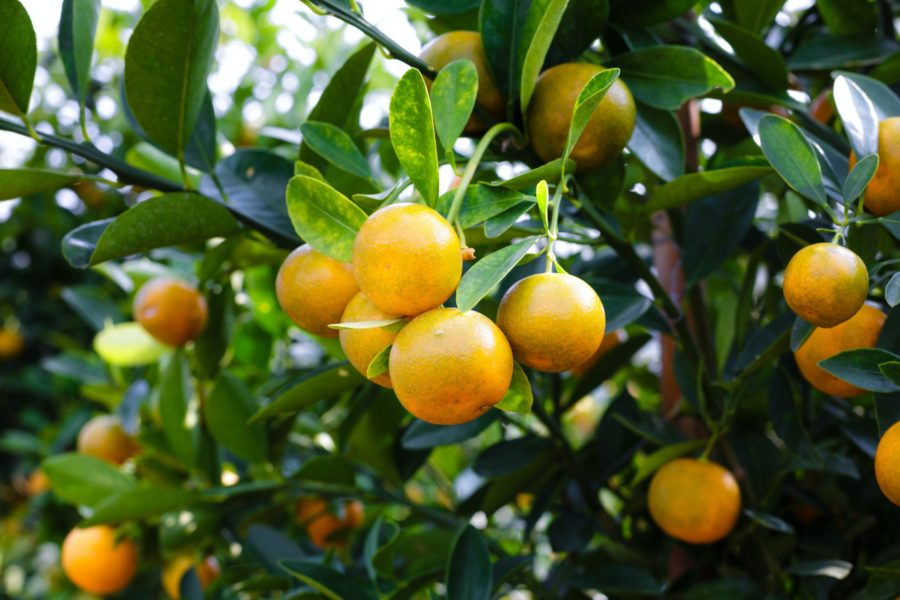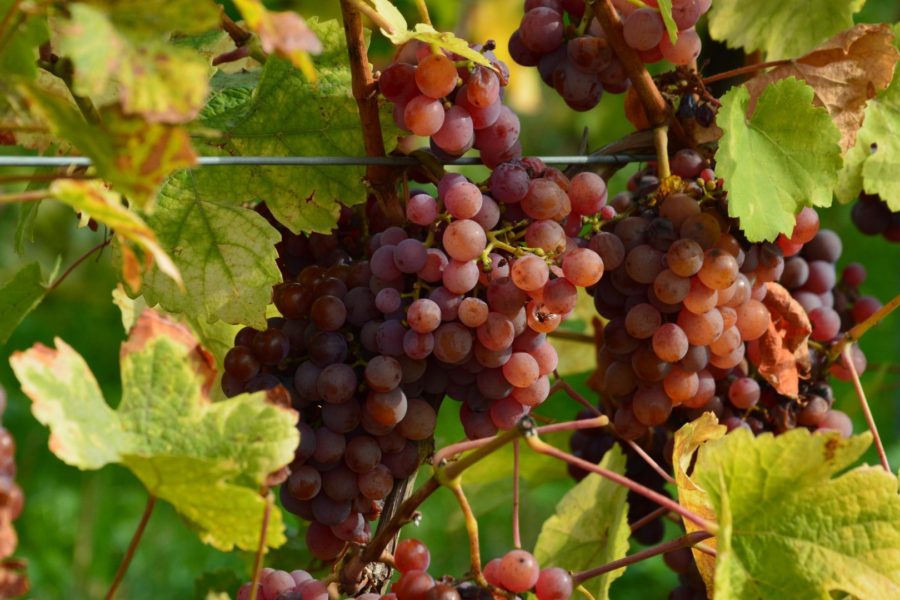
A NEWLY RECORDED SPIDER OF THE GENUS CROSSOPRIZA SIMON FROM BANGLADESH (ARANEAE : PHOLCIDAE)
A newly recorded spider of the genus Crossopriza Simon namely – C. lyoni (Blackwall) is described. The species is cosmopolitan and recorded for the first time from Khulna, Bangladesh. Generic diagnosis, description together with the distribution of the species are provided herewith.

FIRST RECORD OF THE TARO HORN WORM, THERETRA OLDENLANDIAE ON PANIKACHU (COLOCASIA ESCULENTA) IN BANGLADESH
Panikachu (Colocasia esculenta) is one of the most important tuber crops commercially grown in all parts of the country. The crop has good potential for production in the wet season and can survive a certain period in flood water. It is a good source of carbohydrate and other nutrients, supplementing a diet that tends to be deficient during this particular period. The whole plant of panikachu including leaves, petioles, stolon and rhizomes are edible (Saha and Hussain 1983). Among the insect pests infesting Panikachu, leaf hopper, Amrasca biguttula biguttula Ishida; aphid, Aphis gossypii Glover; leaf roller, Tetranychus spp. and common cutworm, Spodoptera litura are reported earlier.

REPELLENCY EFFECT OF ADENANTHERA PAVONINA (L.) EXTRACTS AGAINST PULSE BEETLE, CALLOSOBRUCHUS CHINENSIS L. (BRUCHIDAE)
The leaves, seed and stem bark of Adenanthera pavonina (L.) were extracted in different organic solvents namely Petroleum ether, acetone, chloroform and methanol to investigate the repellent activities of Callosobruchus chinensis L. (Bruchidae). The extracts from the above solvents showed repellent activities against adult C. chinensis at 471.50, 235.75, 117.88, 58.94, and 29.47 μg/cm2 on filter paper. All the test extracts offered repellency at 0.01% level of significance except the stem (acetone) extract which was found 0.1% level of significance (P<0.01). According to the intensity of repellency the result could be arranged in a descending order: leaf (petroleum ether extract) >leaf (chloroform extract) >seed (methanol extract > stem wood (acetone) extract and in all the cases significant differences were noticed.

STATUS AND SPATIAL DISTRIBUTION OF MAJOR INSECT AND MITE PESTS ATTACKING CITRUS AT SYLHET REGION IN BANGLADESH
The study was conducted to determine the pest status and spatial distribution of major insect and mite pests of citrus in Jaintapur, Sylhet, Bangladesh during May to October 2014. In this study, twelve insect and one mite species were found to attack mandarin (Citrus reticulata), sweet orange (Citrus sinensis) and jara lemon (Citrus pennivesiculata) plants. Among them four insect species viz., lemon butterfly (Papilio demoleus L.), citrus leafminer (Phyllocnistis citrella St.), asian citrus psyllid (Diaphorina citri Kuwayana), spined citrus bug (Biprorulus bibax Breddin) and one mite species, citrus red mite (Panonychus citri McGregor) have been found as major pests. Citrus leafminer was found as the most devastating pest (24.29%) followed by lemon butterfly (21.40%) and spined citrus bug (14.29%). As per in-situ count of leaf infestation, the highest infestation (60.40%) was caused by citrus red mite while it was the lowest (37.23%) by lemon butterfly. Intermediate level of leaf infestation was recorded in case of citrus leafminer (55.44%) and asian citrus psyllid (52.62%) with no significant difference over the locations. Similar to leaf infestation, no significant difference was found in fruit infestation over the locations.

EFFECT OF ADULT DIETS ON THE LONGEVITY OF STERILE ORIENTAL FRUIT FLY, BACTROCERA DORSALIS (HENDEL) (DIPTERA: TEPHRITIDAE)
In the present study the effect of different adult diets on the longevity of sterile oriental fruit fly, Bactrocera dorsalis (Hendel) was compared under controlled laboratory condition. Adult flies were provided with protein diet + water and sugar diet as pre-release supplements for five days after adult emergence and then transferred to four post-release diet treatments viz., (i) protein diet + water, (ii) sugar diet (20% sugar solution), (iii) only water and, (iv) nill (without food and water) and their longevity was recorded until death. Experimental results revealed that flies had comparatively longer lifespan on sugar diet than protein diet when either protein or sugar used as pre-release diets. Flies died within two days while provided only water and one to two days without food irrespective of any pre- release supplements. The experimental findings were discussed in the light of possible use in Sterile Insect Technique (SIT) of B. dorsalis.

EFFECTIVE SPRAY SCHEDULE OF CYPERMETHRIN FOR MANAGING POD BORER ATTACKING SUMMER COUNTRY BEAN
The study was conducted in order to find out an effective spray schedule of cypermethrin insecticide against pod borer, Maruca vitrata F. attacking summer country bean. Including an untreated control there were six treatments were used to measure the effectiveness of cypermethrin based on inflorescence and pod infestation, yield and also benefit cost ratio (BCR). Among the different spray schedules of cypermethrin, the lowest rate of pod infestation (4.59% by number and 6.10% by weight) and the highest BCR (6.98) were obtained with Ripcord (cypermethrin) 10 EC @ 1 ml l-1 of water sprayed after observing 5% level of pod infestation and repetition of the same at 15 days interval up to last harvest. On the other hand, highest marketable yield (11.64 t ha-1) was obtained Ripcord (cypermethrin) 10 EC @ 2 ml l-1 of water sprayed after observing 5% level of pod infestation and repetition of the same at 15 days interval up to last harvest but the BCR was lower (4.21) compare to the application rate 1 ml l-1 of water. So, Ripcord (cypermethrin) 10 EC @ 1 ml l-1 of water sprayed after observing 5% level of pod infestation and repetition of the same at 15 days interval up to the last harvest performed the best.

BIO-RATIONAL MANAGEMENT OF POD BORER IN GREEN PEA FIELD
This study evaluated the effect of Tracer 45 SC, Vertimec 18 EC, neem seed kernel extract, neem leaf extract with concentration of 1.2 ml l-1, 0.4 g l-1, 50 ml l-1 and 50 g l-1 water, respectively and hand picking along with an untreated control against pod borer Maruca vitrata infestation on green pea Pisum sativum. Application of the treatments was started from the advent of pod borer infestation and repeated three times with 15 days interval. The treatments revealed pod infestations from 4.2 to 6.0%, 1.3 to 2.7% and 4.9 to 8.3%, respectively at early, mid and late harvest which are statistically lower compared to untreated control. The treatments produced significantly longer (5.6 to 6.1 cm), wider (1.14 to 1.24 cm) and heavier (0.64 to 0.90 g pod-1) pods as well as higher number of seed (3.0 to 3.4) per pod. The marketable yield (862.1 to 1033.7 kg ha-1) and gross yield (884.3 to 1047.0 kg ha-1) were statistically higher in the treatments and the infested yield (33.7 kg ha-1) was highest in the untreated control. The treatments produced revealed 13.1 to 35.6% marketable yield over control. An economic analysis indicated that the highest gross return (837.6 US dollar ha-1) was obtained from the Tracer 45 SC treated plot but net return (760.2 US dollar ha-1), adjusted net return (123.4 US dollar ha-1) and benefit cost ratio (1.7) were highest in the Vertimec 18 EC treated plot. The results indicated the insecticidal treatments were
more potential compared to botanical and mechanical control against pod borer.

EFFECT OF COTTON VARIETIES ON THE GROWTH, MORPHOMETRICS AND LIFE LENGTH OF ARMY WORM
the effects of CB1, CB3, CB5, CB8 and CB12 cotton varieties on the growth, morphometric parameters and life length of the armyworm Spodoptera litura Fabricius (Lepidoptera: Noctuidae) were studied under laboratory conditions. The growth of the larvae differed significantly and was the highest on CB8. The larvae that fed on CB1, CB3 and CB12 revealed statistically similar and lower growth rate. the morphometric parameters of S. litura as a result of feeding on five cotton varieties revealed that the larger egg masses were laid on CB5. the varieties showed statistically significant effects on length, width and weight of different larval instars. the larvae fed on CB8 molted to bigger-sized pupae, and emerged as heavier adults. the life lengths of the male and female insects were longest on CB8 however the female showed statistically similar result on CB5. the CB8 followed by CB5 revealed suitability as the host plant of S. litura, and such varieties are less suitable for cultivation in areas where army worm is a major pest.
